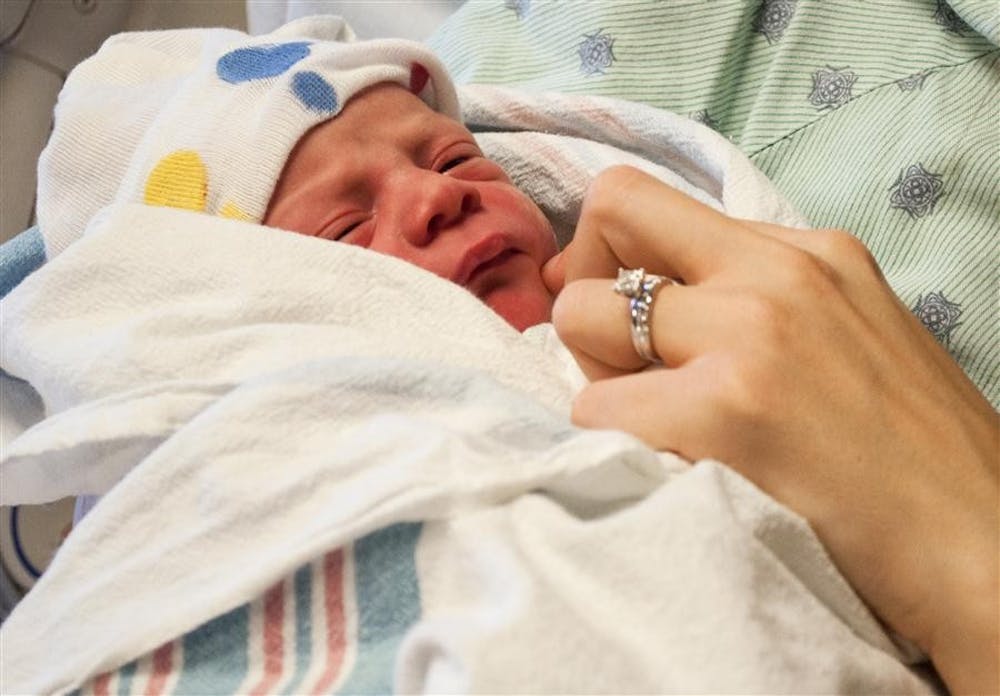Newborn Everett Philippsen sucked on his mother’s forefinger as he lay in her arms, wrapped in a white blanket.
“You were very punctual,” Columbus resident Melissa Philippsen said to her new son.
Melissa began labor shortly after 2 a.m. Wednesday at the Columbus Regional Hospital, exactly 40 weeks and one day into her pregnancy.
Everett was born at the optimal term length for labor, but the same cannot be said for a growing number of babies born nationwide.
One out of every eight babies in the United States is born prematurely, according to March of Dimes Program Specialist Minjoo Morlan.
The Columbus Regional Hospital is one of 100 hospitals nationwide and four hospitals in Indiana that has been selected to implement a 39+ Weeks Quality Improvement
Service Package through the March of Dimes “Healthy Babies are Worth the Wait”
campaign.
Since Saturday, the hospital is enforcing a new policy that prohibits unnecessary elective-induced labors and cesarean deliveries scheduled before 39 weeks of pregnancy.
“Before it was a good idea, but now it’s the absolute rule,” Birthing Center Manager Diane Taylor said.
The other three hospitals participating from Indiana are Terre Haute Union Hospital, DeKalb Health in Auburn, Ind.,and Floyd Memorial Hospital in New Albany, Ind.,
Morlan said.
Taylor said the center was chosen for the initiative because it had already been making strides in premature birth prevention since 2006.
“We were almost always hitting that goal of 39 weeks,” Taylor said. “They asked us to join the initiative to share our success.”
The March of Dimes initiative grant will allow the hospital to enter data in a web-based portal in order to monitor monthly progress and compare data with other hospitals, Morlan said.
The organization will also provide the hospital with technical assistance, patient education programs and ways to connect with other hospitals in the nation that have completed the process before.
“It’s educating the staff members and helping the hospital provide healthier messages to the community,” Morlan said.
Clinical Nurse Specialist Margie Campbell said the number of inductions has been
increasing steadily during the last decade. The reported rate of labor induction in the U.S. has more than doubled since 1990, from 9.5 percent to 22.5 percent in 2006, according to a press release.
“There’s an increased risk of a C-section when you’re forcing it to happen,” Labor Nurse Amy Imlay said. “It also makes for longer labors.”
Morlan said the rising trend in induced labors is due to a lack of awareness of the risks involved. She emphasizes the need to clarify proper term lengths to expecting mothers.
“People might think nine months of pregnancy is full term.
However, full term is actually 40 weeks,” Morlan said.
As a new mother, Philippsen said she believed a natural pregnancy and labor were essential in order for baby Everett to be as healthy as possible.
“I’m all for that,” Philippsen said. “I felt like he would come when he was ready, and that was what was important to me.”
By Samantha Schmidt
Induced labor policy questioned

Get stories like this in your inbox
Subscribe





